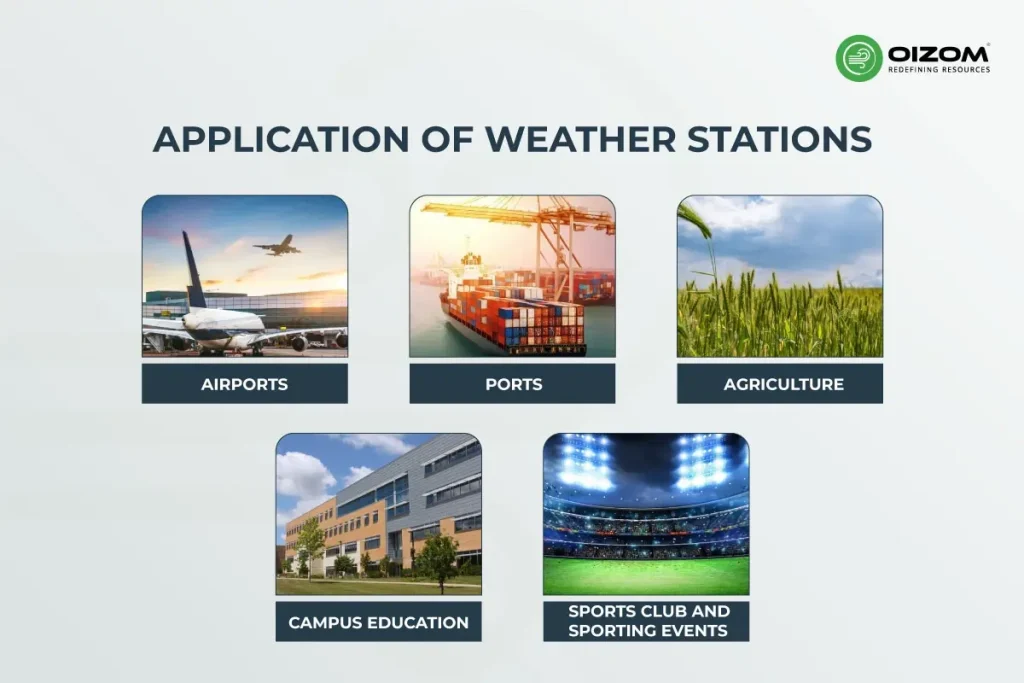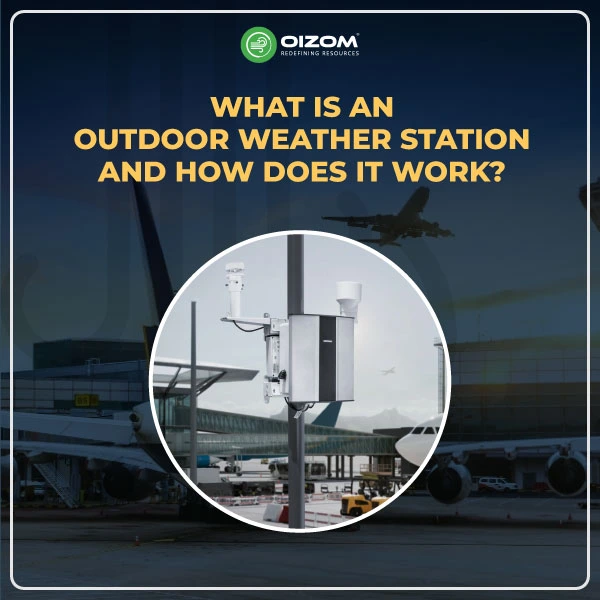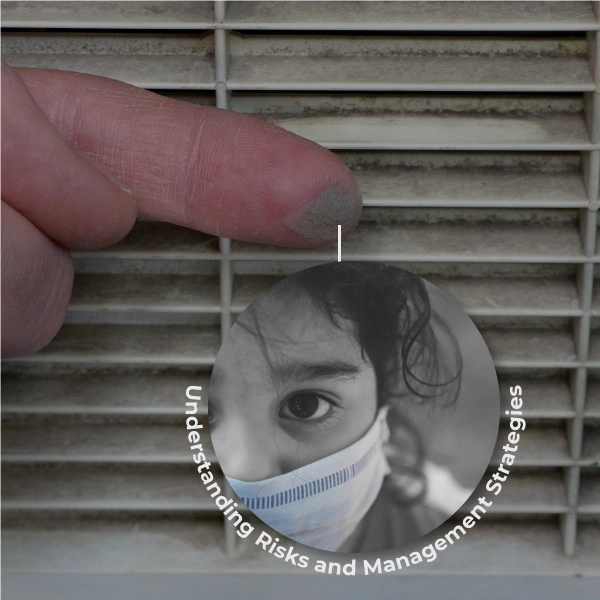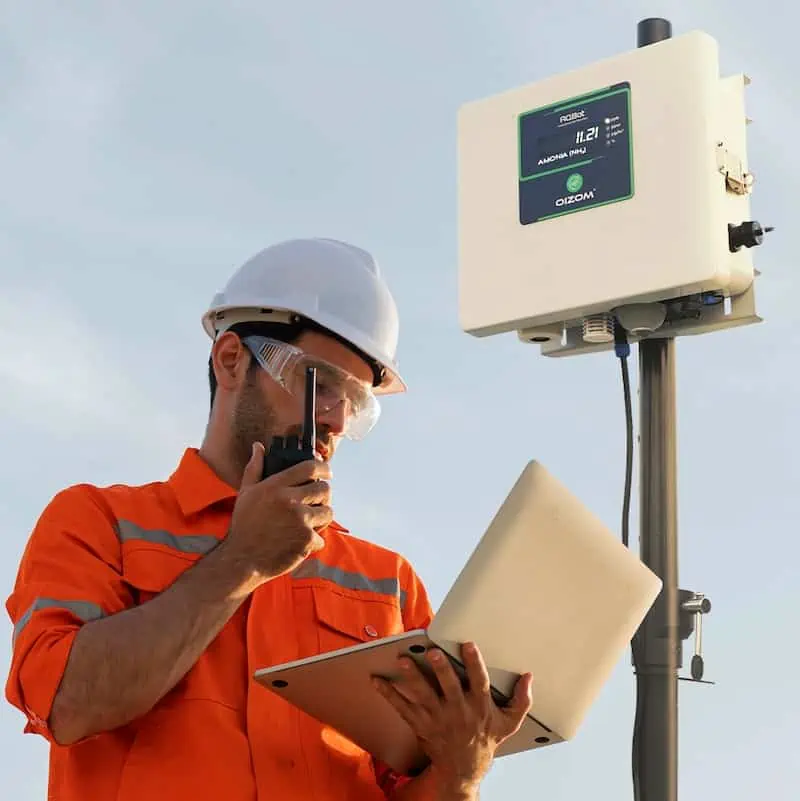10 key takeaway points:
- Purpose of Outdoor Weather Stations: These stations provide accurate, real-time weather data for various applications like farming, construction, sports, environmental monitoring, and emergency services.
- How They Work: Outdoor weather stations use sensors to measure temperature, humidity, wind speed, and rainfall, transmitting data wirelessly to indoor units for analysis.
- Types of Weather Stations: These include automatic, handheld, small, and portable weather stations catering to different needs and use cases.
- Applications by Industry: Used in airports, ports, agriculture, campuses, and sports events to ensure safety, improve efficiency, and support informed decision-making.
- Educational Value: School weather stations provide hands-on learning for students, helping them understand weather patterns, climate science, and environmental studies.
- Benefits in Sports: Weather stations help athletes and coaches plan and perform better by providing real-time weather insights.
- Benefits for Agriculture: Farmers can optimize activities like irrigation, sowing, and pest control, improving yield and resource efficiency.
- Key Features: Accurate data, ease of use, wireless connectivity, and multi-purpose functionality make outdoor weather stations essential tools.
- Installation and Maintenance Tips: Proper setup includes securely mounting sensors, ensuring connectivity, and following manufacturer guidelines for accurate data.
- Sustainability with Solar Power: Solar-powered weather stations, like Oizom Weathercom, are perfect for remote areas without electricity, providing reliable and sustainable performance.
What Is an Outdoor Weather Station and How Does It Work?
Have you ever wondered how we get accurate weather updates for our daily plans or research? In our daily lives, weather changes affect our lives and decisions all the time. Outdoor weather stations make it possible! These compact yet powerful systems are designed to monitor and record real-time weather data from the environment. Whether it’s temperature, humidity, wind speed, or rainfall, outdoor weather stations capture critical parameters to help us understand weather patterns and make informed decisions.
From farmers planning their crops to industries ensuring operational safety, these stations are vital for various applications. But how do they work? By combining advanced sensors and data collection tools like data logger, they measure environmental conditions and transmit this data for analysis, often using IoT technology for real-time updates. In this blog, we’ll break down what an outdoor weather station is, how it functions, and why it’s essential for everyday life. Let’s dive in!
Types of Outdoor Weather Stations
Weather stations can be divided into the following types according to different classification standards: Understanding these types can help you choose the right one for your purpose.
Automatic weather stations
They are smart devices that make weather monitoring easy and efficient. They can measure and send data remotely without needing someone on-site. Using advanced products like Oizom Weathercom, these stations can track various weather parameters with high accuracy. The data is accessible in real-time through smartphones, laptops, or other devices, making it convenient for industries, researchers, and urban planners to stay updated on weather conditions.
Handheld Weather Station
In scenarios where only a few specific parameters need to be measured, handheld weather stations are the perfect choice. These portable devices are easy to use and do not require fixed installations, making them highly convenient for temporary or mobile weather monitoring.
Small Weather Station
Small weather stations are compact and designed for applications where fewer parameters need to be measured. Commonly used in fixed locations, they can operate 24/7 to provide continuous data on four to six meteorological parameters. Their simplicity and efficiency make them ideal for localized and smaller-scale monitoring.
Portable Weather Stations
Portable weather stations are compact and designed for users who need to move between locations while measuring weather conditions. They can track parameters like wind speed and direction, temperature, humidity, soil conditions, sunlight hours, light intensity, and UV levels. These stations are simple to use, easy to set up, and quickly disassembled.
Types of Weather Stations
- By Application: Photovoltaic, agricultural, traffic, airport, scenic area, or campus weather stations.
- By Measured Parameters: Four-element, five-element, up to twelve-element weather stations based on the number of measurements.
- By Location: Reference stations, regional stations, mesoscale, or rooftop weather stations.
- By Automation: Manned, unmanned, high-precision, semi-automatic, or fully automatic stations.
- By Installation: Fixed or portable weather stations.
- By Communication: Wired, wireless, RS232, RS485, and other transmission modes.
How Do Outdoor Weather Stations Work?
Outdoor weather stations work using sensors and wireless communication. The outdoor sensors measure weather conditions like temperature, humidity, wind speed, direction, air pressure, and rainfall. This data is sent wirelessly to an indoor display unit, which processes it and provides accurate weather updates, including current and forecasted conditions.
Application of weather stations

According to different usage scenarios, it can be divided into various applications, such as airport weather stations, ports, agricultural weather stations, industrial weather stations, campus weather stations, sports events weather stations, etc.
Airport: One of the most significant locations for weather stations is airports. Weather stations at airports can provide the required meteorological information for flights and guarantee aircraft safety and timeliness by monitoring wind direction, wind speed, air temperature, air pressure, and other meteorological factors in real time.
When runways experience heavy rainfall or are covered under the snow, they pose significant safety risks to aircraft operations, ground crews, and passengers. Monitoring runways for wet and cold conditions allows airports to promptly identify and assess potential hazards, enabling them to take appropriate measures to ensure everyone’s safety. By staying vigilant and informed about runway conditions, airports can implement necessary precautions, adjust flight schedules, and communicate critical information to pilots, ensuring safe landings, take-offs, and ground operations.
Ports are crucial locations for weather stations. Weather stations monitor wind direction, wind speed, temperature, air pressure, and other weather conditions at harbors in real time. This information is essential for ensuring the safety of ships and guiding their navigation.
Additionally, weather stations can installed on boats. They are typically installed at the bow to measure wind speed, wind direction, temperature, humidity, air pressure, and noise in the surrounding environment. These stations offer accurate measurements, low power consumption, and resistance to magnetic interference, making them reliable even in extreme conditions. Their advanced features, like ultrasonic technology, make them an excellent choice for marine weather monitoring worldwide.
Agricultural fields are key locations for weather stations. These stations monitor temperature, humidity, light, and other weather conditions in real-time. This information helps farmers plan their activities, optimize agricultural practices, and boost production efficiency.
Weather stations in agriculture offer valuable benefits by providing precise data and actionable insights for better farm management. They help farmers monitor local climate conditions, optimize activities like sowing, irrigation, and pesticide application, and improve resource efficiency in water and energy use. This leads to better crop management and more accurate yield predictions, ultimately enhancing sustainability.
School weather stations are weather monitoring systems installed in schools and universities to provide real-time weather data. These systems offer several benefits:
Data Collection: They track weather parameters like temperature, humidity, wind speed and direction, rainfall, air pressure, and solar radiation. This data is continuously collected and can be used for educational activities.
Educational Tool: School weather stations help students learn about weather, climate, and the environment. They can study weather patterns, make forecasts, and understand how weather impacts daily life.
Hands-On Learning: These stations allow students to actively collect and analyze weather data, encouraging critical thinking, problem-solving, and a deeper understanding of meteorology and climate science.
Sports Events: Weather has a big impact on sports and athletics, from influencing track performance to shaping team strategies. Knowing the weather conditions can make a big difference in the outcome of events. That’s where weather stations help. They provide useful information about weather conditions, helping athletes, coaches, and organizers make smart decisions. In this article, we’ll look at how weather stations benefit the world of sports.
Weather stations play a key role in improving sports performance. They provide real-time weather data, helping athletes adapt their training to current conditions. For example, in long-distance running, knowing the temperature, humidity, and wind speed allows runners to adjust their strategy and pace. This helps boost performance and increases their chances of success.
Benefits of Using an Outdoor Weather Station
Using an outdoor weather station comes with various benefits that make it a valuable tool for personal and professional use.
- Accurate Data: Gives accurate weather updates for your exact location, better than general forecasts.
- Multi-Purpose: Tracks temperature, humidity, rainfall, wind speed, and UV levels, useful for farming, events, construction, and more.
- Easy to Use: Wireless and smart features let you check weather data on your phone or computer anytime.
- Improved Safety: Alerts you to sudden weather changes, helping you take quick action to stay safe.
- Real-Time Updates: Provides up-to-date information for better planning of activities or work.
Installation and Maintenance Tips
- Unpack and Review
Start by carefully unpacking your weather station and reviewing the installation manual. Every model is different, so it’s important to follow the specific instructions provided. - Assemble the Components
Put together the main unit and attach the sensors, such as the anemometer, rain gauge, and temperature and humidity sensors. Ensure everything is placed correctly, especially the anemometer, which needs to spin freely without obstructions. - Connect the Sensors
Securely connect the sensors to the main unit. If your station is wireless, check the signal range and minimize interference. Use any antennas or boosters recommended by the manufacturer to improve connectivity. - Install the Weather Station
Install the weather station securely at your chosen location. Ensure it’s level, stable, and firmly anchored to prevent shifting. For stations with solar panels, position them in a spot with consistent sunlight for optimal performance. - Power Up and Test
Turn on the device and make sure all sensors are working properly. Monitor the readings for a short while to confirm accuracy. If anything seems off, contact the manufacturer’s support team. - Power supply: Determine whether your weather station requires batteries or an electrical connection. Connect the power source according to the instructions to ensure continuous operation. Imagine you’re in a remote desert or an off-grid spot, and you need reliable weather data, no matter the environment. With no access to the electric grid, what’s the solution? Oizom’s Weathercom is your answer. It’s 100% solar-powered, making it perfect for off-grid areas. Plus, it’s trusted by IMD and WMO for its accuracy and reliability.
- Personalize the Settings
Customize the settings to your preferences, such as setting alerts or integrating them with your smart system.
Finally, read and follow the manufacturer’s complete installation and operation manuals before installing a weather station. This ensures proper installation and maintenance of weather station accurate and dependable weather data.
Conclusion
Outdoor weather stations deliver accurate weather data for farming, construction, environmental monitoring, weather forecasting, and emergency services. Using advanced sensors and wireless communication, they provide real-time updates to help outdoor enthusiasts plan their activities safely and enable professionals to make informed decisions. Whether for work or leisure, an outdoor weather station is an essential tool for reliable and timely weather information.






